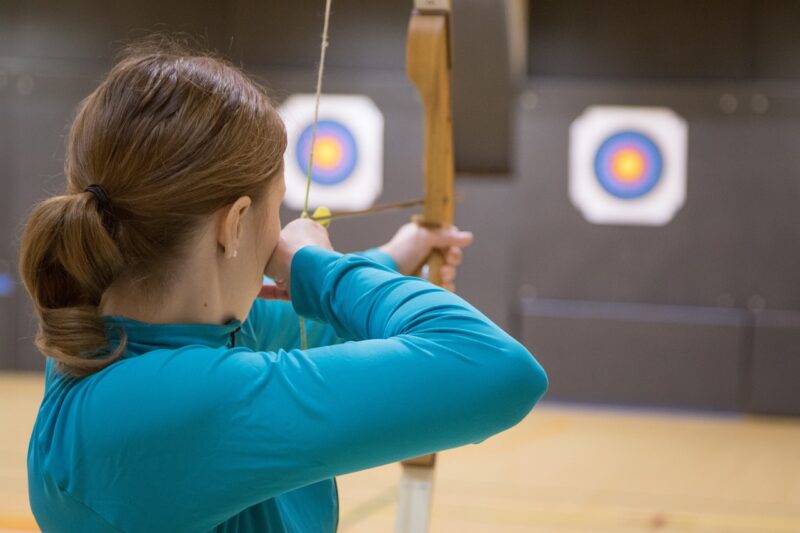The Ultimate Guide to Archery: Skills, Techniques, and Gear for Beginners
November 14, 2024

Archery is an ancient skill that has evolved from a vital means of survival into a popular sport and recreational activity enjoyed by many around the world. Whether you’re drawn to archery for its historical significance, competitive nature, or simply as a way to enjoy the great outdoors, getting started can seem daunting. Fortunately, this comprehensive guide will walk you through the essential skills, techniques, and gear needed for beginners to embrace archery with confidence and skill.
1. Understanding the Basics of Archery
Before diving into the art of archery, it’s crucial to grasp the basic principles of how it works. At its core, archery involves the use of a bow to launch arrows at a target. This requires a combination of physical skill, mental focus, and an understanding of the equipment involved.
Key Concepts in Archery:
- Archery Types: There are various forms of archery, including target archery, field archery, 3D archery, and bowhunting. Each has its rules, equipment, and competitive settings.
- Forms of Bows: The two primary types you’ll encounter are recurve bows and compound bows, each with their unique advantages and uses.
- Essential Gear: Arrows, protective gear, and accessories all play a role in a successful archery experience. Understanding each component is vital for beginners.
Learning these fundamentals will lay a strong foundation for your archery journey, ensuring you have the knowledge to progress successfully.
2. Essential Archery Gear for Beginners
Having the right equipment is essential for any new archer. Without suitable gear, you may struggle to develop your skills and enjoy the sport effectively.
Basic Archery Gear:
- Bow: For beginners, a recurve bow is often recommended due to its simplicity and ease of use. They are also more forgiving in terms of shooting form and technique.
- Recurve Bow: Straight limbs and simple structure that is user-friendly for new archers.
- Compound Bow: Comprises wheels and pulleys to harness more power for less effort but may be more complex for true beginners.
- Arrows: Choosing the correct arrows for your bow is vital. They should match the bow’s draw weight and your own physical attributes such as height and draw length. A proper fit will improve your accuracy and consistency.
- Components of Arrows: Include shafts, fletchings (feathers or vanes), nocks, and tips. Each plays a critical role in arrow performance.
- Protective Gear: Always wear protective gear like an arm guard to prevent injuries while drawing the bowstring, and a finger tab or glove to ensure a smooth, comfortable release.
- Sights and Stabilizers: For those interested in target archery, adding a sight will help with aiming, while stabilizers help steady the bow during the shot.(optional for beginners but beneficial as skills advance.)
Invest in good quality gear; it will enhance your experience significantly and provide better results in your practice sessions.
3. Key Skills and Techniques for Beginners
Mastering archery requires significant focus on developing basic skills and proper shooting techniques. As you begin, pay close attention to the following components:
Archery Techniques:
- Stance: Your body position is crucial for balance and stability. Stand with your feet shoulder-width apart, perpendicular to the target, with your leading foot pointing towards it.
- Practice maintaining a steady stance to ensure accurate shots.
- Grip: Your grip should be relaxed on the bow. Avoid squeezing the bow too tightly as this can impact your shot.
- Find a suitable grip that feels comfortable, allowing your bow to sit properly in your hand.
- Aiming: Begin by focusing on the target. Tips for beginners include using your dominant eye to line up shots accurately and practicing point-of-aim shooting until muscle memory develops.
- Draw and Release: Anchor your draw hand on your face, taking note of where it rests for consistency. Release the bowstring smoothly and with intention. Quick releases can affect arrow flight accuracy.
- Practice shooting with a focus on technique rather than distance or speed.
- Follow Through: After releasing the arrow, maintain your position and keep your bow raised for a brief moment. This ensures better consistency and balance as the arrow travels towards the target.
Regular practice will allow you to refine these skills and develop a stable shooting form.
4. Safety Considerations in Archery
Safety should always be your top priority when practicing archery. Whether you’re in a controlled environment or outdoors, observing general safety measures is essential for protecting yourself and others.
Safety Tips:
- Eye Protection: It is advisable to wear safety glasses to protect your eyes from potential injury while shooting.
- Always Use an Arrow Rest: When drawing the bow, ensure that the arrow only sits on the rest. Avoid placing fingers in the path of the arrow when drawing back to prevent injury.
- Use a Designated Range: Always shoot in safe areas specifically designed for archery practices, away from people, pets, and property. Follow range rules and guidelines at all times.
- Check Equipment Regularly: Inspect your bow and arrows for any damage before usage to prevent accidents that could lead to mishaps.
By emphasizing safety, you can create a positive environment for both yourself and those around you as you hone your archery skills.
5. Getting Started: Archery Practice and Communities
Once you’re well-equipped with the right gear and knowledge, practicing regularly is critical to improving your skills and enjoying archery.
Finding Practice Spots and Communities:
- Local Archery Ranges: Seek out local archery clubs or ranges in your area. Many offer lessons, practice sessions, and equipment rentals suitable for beginners.
- Archery Classes and Workshops: Look for classes provided by coaches or experienced archers. These can provide insightful feedback and accelerate your development.
- Join Archery Clubs/Communities: Engaging with fellow archers within communities can provide you with a support network, opportunities to participate in events, and their shared knowledge can enhance your overall learning experience.
- Participate in Competitions: As you gain confidence, consider entering friendly competitions to challenge yourself. It offers opportunities to meet other archery enthusiasts and test your skills in a supportive environment.
Establishing a practice routine, coupled with ongoing training, will facilitate your growth as an archer while forging lasting connections in the archery community.
Conclusion: Embrace the Journey of Archery
Archery has much to offer, from honing physical skills to embracing the meditative aspects of this ancient art form. By understanding the essential skills, purchasing the right gear, respecting safety guidelines, and engaging with fellow enthusiasts, you will experience an enriching journey as you cultivate your archery abilities.
Whether your goal is to compete, recreate, or simply enjoy moments in nature, archery provides a fulfilling adventure that awakens the spirit. Begin your journey today and discover the excitement of hitting your mark one arrow at a time.







